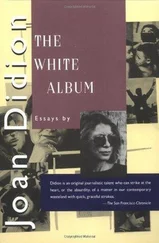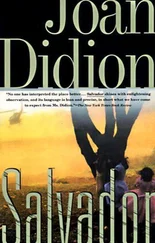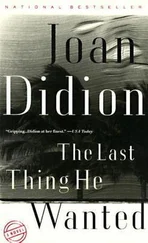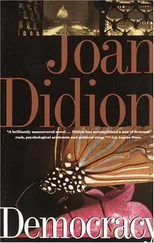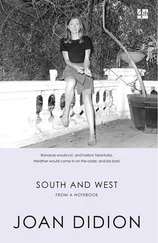OF the eighty-nine members of the Lakewood High School Class of 1989 who had responded, a year after graduation, to a school district questionnaire asking what they were doing, seventy-one said that they were attending college full or part time. Forty-two of those were enrolled at Long Beach Community College. Five were at community colleges in the neighboring communities of Cerritos and Cypress. Twelve were at various nearby California State University campuses: Fullerton, Long Beach, San Diego, Pomona. Two had been admitted to the University of California system, one to Irvine and one to Santa Barbara. One was at U.S.C. Nine were at unspecified other campuses. During the 1990–91 school year, 234 Lakewood High students were enrolled in the district’s magnet program in aerospace technology, which channeled into Long Beach Community College and McDonnell Douglas. Lakewood High’s SAT scores for that year averaged 362 verbal and 440 math, a total of ninety-five points below the state average.
This was not a community that pushed its children hard, or launched them into the far world. Males were encouraged to continue, after graduation and indeed into adulthood, playing ball (many kinds of ball, all kinds of ball) in the parks and on the schoolgrounds where they had grown up. Females were encouraged to participate in specific sports of their own, as well as to support the team activities of the ball players. Virtually everyone to whom I spoke in the spring of 1993 mentioned the city’s superior sports program. “It’s been a very clean community,” I was told by John Todd, who had been instrumental in the city’s 1954 incorporation and had served as city attorney ever since. “The people that made it up were sound American citizens. We were oriented to our schools and churches and other local activities. We have a tremendous park and recreation program here in Lakewood. And it tended to keep people here.” Another longtime resident, whose oldest son worked for McDonnell Douglas and whose other grown children were all in school nearby, echoed this: “It’s just a mass recreation program to keep them all busy.”
People in Lakewood often mentioned to me how much there was going on in the area. There were the batting cages. There was bowling. There were many movies around. There was, nearby in Downey, the campaign to preserve the nation’s last operating original McDonald’s, a relic of 1953 at the corner of Lakewood Boulevard and Florence Avenue. “If they’re going to tear this down, they might as well tell Clinton please take your business to Taco Bell,” one observer told the Press-Telegram. And there was, always, the mall, Lakewood Center, the actual and figurative center of town. During the days I spent in Lakewood I had occasion to visit the mall now and then, and each time I found it moderately busy, the fact that its sales figures had decreased every quarter since 1990 notwithstanding. There was a reflecting pool, a carousel, a Burger King, a McDonald’s, if not an original McDonald’s. There was a booth offering free information on prescriptions. There was another displaying photographs of houses for sale. I said to a woman leafing through the listings that I had not before seen houses for sale in a mall. “H.U.D. and V.A. repos,” she said.
One day at the mall I walked over to the freestanding Bullock’s, which, because it was about to close its doors for good, was in the process of selling everything in the store at thirty-five percent off the ticket price. There were women systematically defoliating the racks in the men’swear department, women dropping discards and hangers in tangles on the floor, women apparently undiscouraged by the scrawled sign warning that register lines were “currently in excess of 3+ hours long,” women who had already staked out positions for the wait, women curled with their children on the floor, women who had bulwarked their positions with forts of quilts, comforters, bedspreads, mattress pads, Cuisinarts, coffee makers, sandwich grills, Juice Tigers, and Heart Wafflers. These were the women and the daughters and granddaughters of the women who had seen the hundred-foot pylon in 1950 and decided that this was the place to start. The clerks and security personnel monitoring the register lines were men. These were the men and the sons and grandsons of the men who used to get what seemed like half the A-4 line out to watch Little League.
“WE want great cities, large factories, and mines worked cheaply, in this California of ours!” That was Henry George, in “What the Railroad Will Bring Us,” rhetorically setting forth what was in 1868 popular local sentiment. Then he proceeded to count the cost:
Would we esteem ourselves gainers if New York, ruled and robbed by thieves, loafers and brothel-keepers; nursing a race of savages fiercer and meaner than any who ever shrieked a war-whoop on the plains; could be set down on our bay tomorrow? Would we be gainers, if the cotton-mills of Massachusetts, with their thousands of little children who, official papers tell us, are being literally worked to death, could be transported to the banks of the American; or the file and pin factories of England, where young girls are treated worse than even slaves on southern plantations, be reared as if by magic at Antioch? Or if among our mountains we could by wishing have the miners, men, women and children, who work the iron and coal mines of Belgium and France, where the condition of production is that the laborer shall have meat but once a week — would we wish them here?
Can we have one thing without the other?
In those towns off the San Diego Freeway that had seemed when times were good to answer Henry George’s question in the affirmative, 1993 was a sullen spring. In April, about the time the Lakewood Center Bullock’s was selling the last of its Heart Wafflers, the ten-year-old girl who said that she had been assaulted by a Spur Posse member gave her first press conference, in Gloria Allred’s office. Her mother had been seen, on Donahue, The Home Show , and 20/20 , but the child, by that time eleven, had not. “I have been upset because I wanted to be on TV,” she said at her press conference. “To show how I feel. I wanted to say it for myself.” Also in April, Spur Posse members approached various talent agencies, trying to sell their story for a TV movie. An I.C.M. agent asked these Spurs if they were not concerned about how they might be presented. Their concern, they told him, was how much money they would make. I.C.M. declined to represent the Spurs, as did, it was later reported, C.A.A., United Talent Agency, and William Morris.
It was April, too, at the Douglas plant on the Lakewood city line, when Teamsters Local 692 went on strike, over the issue of whether or not Douglas could contract out work previously done by union members. “They can’t do that to people after twenty-seven years,” the wife of one driver, for whom the new contract would mean a cut from $80,000 to $35,000 a year, told the Press-Telegram. “It’s just not right.” It was in April, again, that Finnair disclosed discussions about a switch from its mostly Douglas fleet to buying Boeing. It was in May that Continental, just out of bankruptcy reorganization, ordered ninety-two new planes, with options for ninety-eight more, all from Boeing.
In a town where it was possible to hear, unprompted, a spirited defense of the DC-10 (“Very quiet plane,” John Todd told me, “nice flying plane, compared to those Boeings and those other airplanes it makes about half as much noise”), the involvement with Douglas went deeper than mere economic dependence. People in Lakewood had defined their lives as Douglas. I had lunch one day with a 1966 graduate of Lakewood High who had later spent time in the Peace Corps. It seemed that somewhere in the heart of Africa, he had hopped a ride on a DC-3. The DC-3 had a plate indicating that it had come off the Long Beach line, and he had thought, There it is, I’ve come as far as I can go and it’s still Douglas. “It’s a town on the plantation model,” he said to me at lunch. “Douglas being the big house.”
Читать дальше
Конец ознакомительного отрывка
Купить книгу



